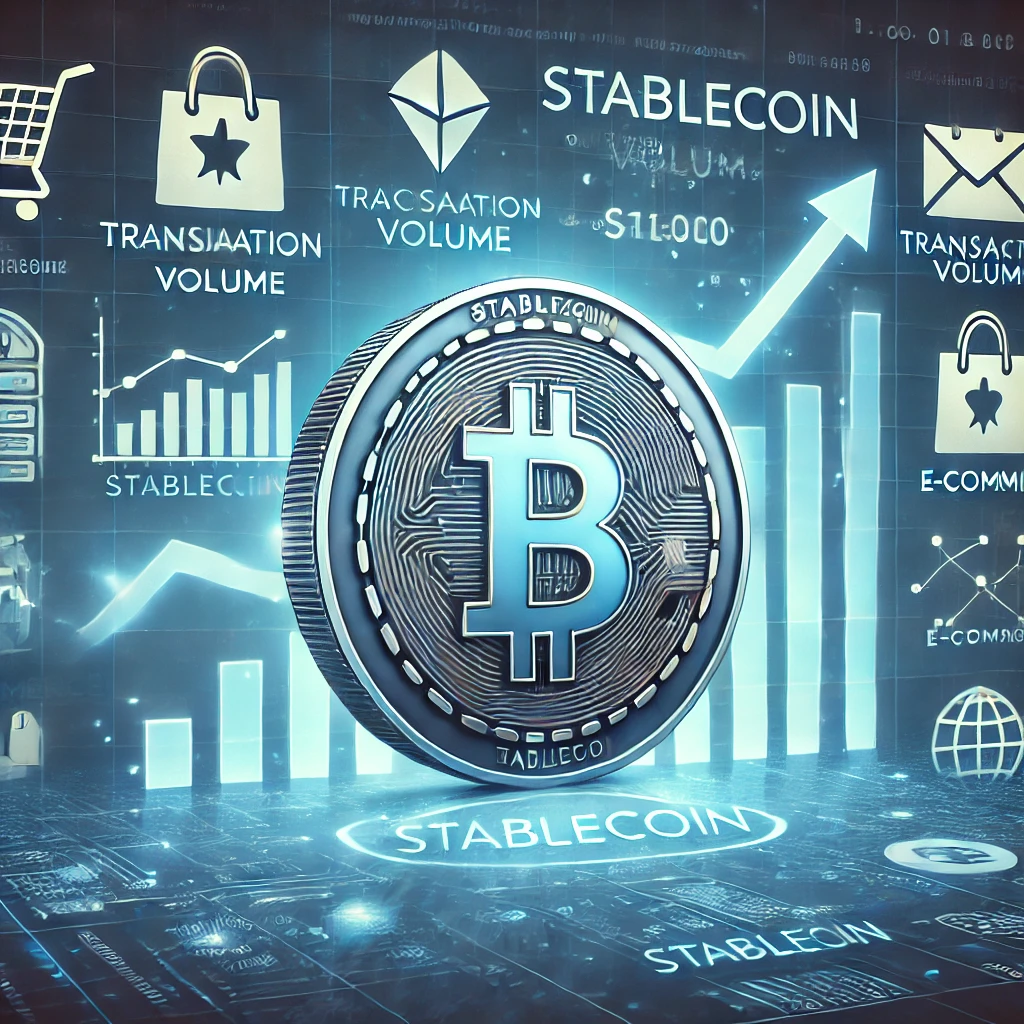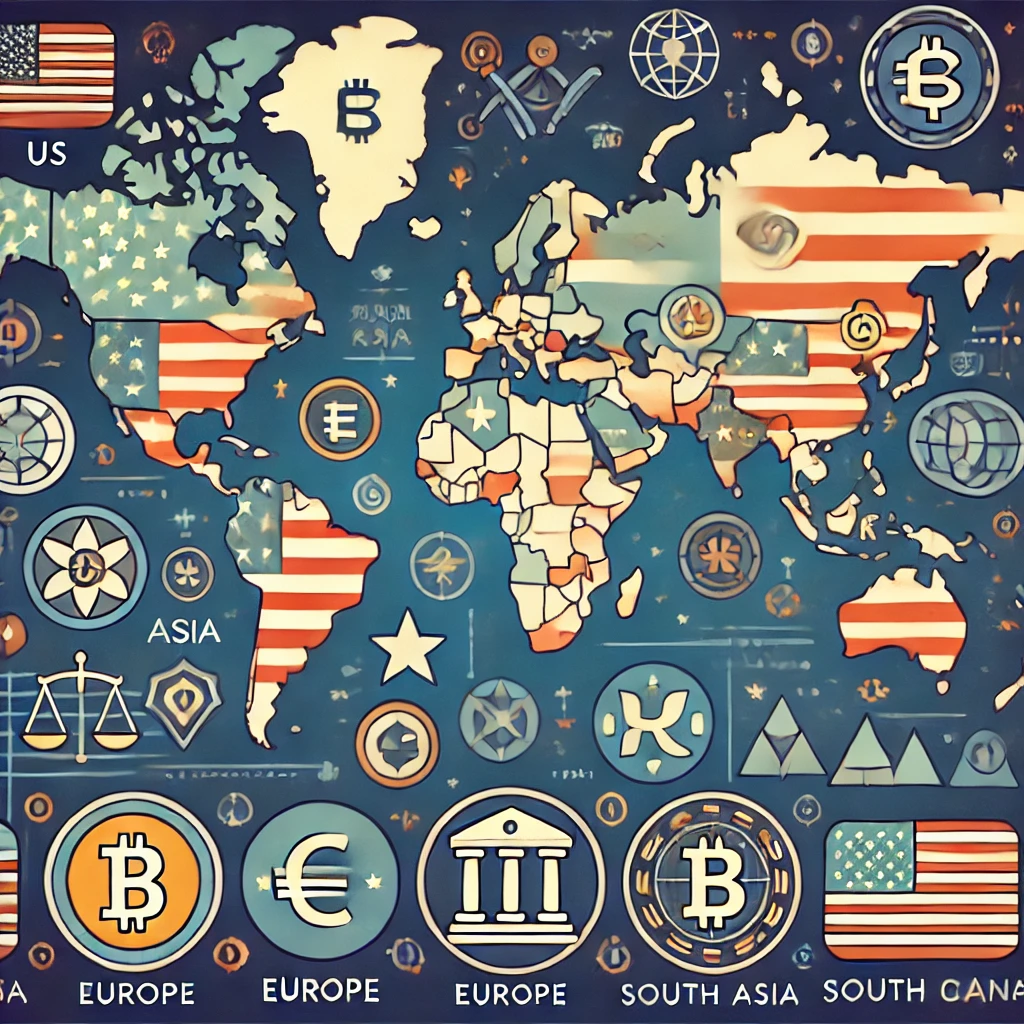
Overview
Stablecoins are a type of cryptocurrency designed to maintain a stable value relative to a reserve asset such as fiat currency. Their purpose is to offer the benefits of digital assets while providing the stability of traditional money. Unlike Bitcoin or Ethereum, which are volatile, stablecoins have their value fixed by a specific asset or algorithm, making them suitable for use as a means of transaction and storage. According to a recent report by Visa, the growth of stablecoins has emerged as an important trend in the financial sector, demonstrating their growing adoption and importance. The report also highlights the potential for stablecoins to be utilized in a variety of areas, including international remittances, payment systems, and digital financial ecosystems. For example, stablecoins can significantly improve the efficiency of international remittances by offering lower fees and faster transaction speeds. They can also contribute to greater transparency and security within the digital financial system. For these reasons, stablecoins are expected to gain even more traction in the coming years.
Stable and an overview of their purpose
A stablecoin is a digital currency pegged to a stable asset, such as the US dollar or gold. Their main purpose is to combine the stability of traditional fiat currencies with the efficiency and security of digital transactions. Unlike volatile cryptocurrencies like Bitcoin, stablecoins are designed to minimize price fluctuations, making them a reliable medium of exchange and store of value. These characteristics make them widely used in a variety of financial activities.
One of the main uses of stablecoins is for transactions and remittances. In the traditional financial system, international transfers require high fees and long processing times, but stablecoins solve these problems: they offer low fees and fast transaction speeds, providing great convenience to users. Stablecoins are also used as a hedge against the volatility of cryptocurrencies. Due to the high volatility of the cryptocurrency market, investors utilize stablecoins to protect the value of their assets.
A recent report from Visa highlights the growth of stablecoins as an important trend in the financial sector, demonstrating their growing adoption and importance. The report also highlights the potential for stablecoins to be utilized in a variety of areas, including international remittances, payment systems, and digital financial ecosystems. For example, stablecoins can significantly improve the efficiency of international remittances by offering lower fees and faster transaction speeds. They can also contribute to greater transparency and security within digital financial systems.
For these reasons, we expect stablecoins to gain even more traction in the coming years, especially as financial institutions and enterprises actively adopt them. Stablecoins are becoming an important part of the future of digital finance, and we’re excited to see where they go from here.
Visa reports in stable courses
Visa’s report highlights the burgeoning role of stablecoins in the global economy. According to the report, stablecoins have seen exponential growth in transaction volume and user adoption over the past few years. Visa emphasizes that stablecoins are becoming an integral part of financial infrastructure, facilitating faster and more secure cross-border transactions. The report also highlights the potential for future innovation and integration of stablecoins into mainstream finance through collaboration between traditional financial institutions and cryptocurrency platforms.
Growth trends in the stablecoin market
- Increased trading volume
- Widespread adoption in e-commerce
- Integrations with payment platforms
- Scaling in international money transfers
- Increased acceptance by financial institutions
Stablecoins have seen a recent surge in trading volume. This is due to a number of factors. First, widespread adoption in e-commerce is having a major impact. Many online stores are adopting stablecoins for reliable payments. Additionally, integration with various payment platforms has increased ease of use. The use of stablecoins is also expanding in international remittances, thanks to low fees and fast transaction speeds. Finally, financial institutions are also embracing stablecoins, further expanding their importance and use.
Impact on traditional finance

Stablecoins are transforming traditional finance by providing a bridge between digital assets and fiat currencies. Stablecoins enable faster, cheaper, and more transparent transactions compared to the traditional banking system. Financial institutions are increasingly adopting stablecoins to improve liquidity management and cross-border payments. This is especially beneficial for international money transfers, where low fees and fast transaction speeds greatly improve efficiency.
Stablecoins also facilitate decentralized finance (DeFi) applications that offer new investment opportunities and financial products. DeFi provides financial services in a decentralized manner, allowing users to make financial transactions without intermediaries. The integration of stablecoins plays an important role in increasing the reliability and stability of these DeFi applications, which will contribute to improving financial inclusion and reducing dependence on traditional banking infrastructure.
As a result, stablecoins are playing an important role in the digital economy, increasing the efficiency and accessibility of the financial system. This will allow more people to access financial services in the future, which will have a positive impact on the entire economy.
Stablecoin regulatory landscape

| Region | Current regulations | Potential changes |
|---|---|---|
| United States | Traditional AML and KYC requirements | Proposed federal oversight |
| 欧洲 | Ongoing MiCA regulations | Enhanced consumer protection measures |
| Asia | Different approaches by country | Increasing regulatory harmonization |
| South America | Emerging frameworks in some countries | Regional collaboration possibilities |
Regulation of stablecoins varies from region to region. In the United States, existing anti-money laundering (AML) and know-your-customer (KYC) requirements apply, and federal oversight is being proposed. In Europe, there is the ongoing Markets in Cryptographic Assets Regulation (MiCA), which is moving towards strengthening consumer protection measures. In Asia, there is a growing movement towards regulatory harmonization, although countries are adopting different approaches. In South America, emerging frameworks are being introduced in some countries, and the possibility of cross-regional cooperation is being discussed. These regional regulatory shifts are having a significant impact on the global adoption and use of stablecoins.
Conclusion
Stablecoins represent an important innovation in the digital finance landscape. Their ability to leverage the benefits of blockchain technology while maintaining a stable value is uniquely positioned to bridge the gap between traditional finance and digital assets. Visa’s report highlights the significant growth and potential of stablecoins, showing that they are playing an important role in facilitating global transactions and promoting financial inclusion.
In the United States, stablecoins are regulated under existing anti-money laundering (AML) and know-your-customer (KYC) requirements, with federal oversight being proposed. In Europe, the Markets in Cryptographic Assets Regulation (MiCA) is strengthening consumer protections. In Asia, countries are adopting different approaches, but there is a growing movement towards regulatory harmonization. In South America, emerging frameworks are being introduced in some countries, and the possibility of regional cooperation is being discussed.
These developments in the regulatory framework are likely to further integrate stablecoins into the financial system and spur further innovation and adoption. Stablecoins will continue to play an important role in the digital economy, overcoming the limitations of traditional finance and creating new financial opportunities.
Key takeaways
- Stablecoins provide stability and efficiency in digital transactions.
- Visa’s report highlights the significant growth in stablecoin use.
- Stablecoins facilitate faster and more secure cross-border transactions.
- Financial institutions are increasingly adopting stablecoins.
- The regulatory framework is evolving to accommodate the growth of stablecoins.
See also
- Campbell, A. (2024, May 12). Stablecoins Are Growing and the Visa Report Proves It. Forbes. Retrieved, https://www.forbes.com/sites/digital-assets/2024/05/12/stablecoins-are-growing-and-the-visa-report-proves-it/
- Team Investopedia. (2023, March 15). Understanding Stablecoins. Investopedia. https://www.investopedia.com/terms/s/stablecoin.asp
- Jain, A. (2023, June 22). The Future of Stablecoins: Trends and Predictions. CoinDesk. https://www.coindesk.com/markets/2023/06/22/the-future-of-stablecoins-trends-and-predictions/
- Bhardwaj, S. (2024, April 10). How Stablecoins Are Shaping the Financial Landscape. CryptoSlate. https://cryptoslate.com/how-stablecoins-are-shaping-the-financial-landscape/
- Coinpedia – Fintech & Cryptocurrencies. (2023, June 20). Security Token Offering Summit 2024 – Full Session [Video]. YouTube. https://www.youtube.com/watch?v=RKgFPKzFsFM&t=90s
